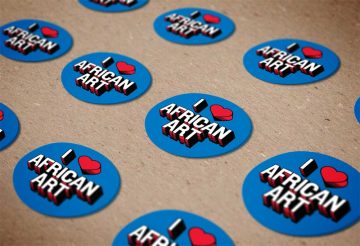Home | History of Benin | Early Photography in Nigeria | S.O. Alonge: The Early Years | Ideal Studio, Benin City | Picturing a New Society | Ideal Studio Portraits | Ideal Studio Setting | Royal Court Photography | Commemorative Objects
Solomon Osagie Alonge (1911–1994) was born in Benin City, Nigeria. He was educated in English at the Benin Baptist Elementary School and in 1925, at the age of 14, moved to Lagos and lived with his uncle to learn a profession. He soon became interested in photography and took on an apprenticeship to enhance his knowledge and skills.
For Alonge, photography proved to be a lucrative and respectable profession. In 1930, he moved back to Benin and began practicing photography from his house on Ugbague Street. He often traveled by bicycle outside Benin City taking yearly school portraits and gatherings at social clubs, sporting events, and government ceremonies. Alonge became active in the Benin Social Circle in the late 1930s and served as treasurer of the Central Baptist Church for over 20 years. Every week he played hymns on his bandoneon for Sunday services.
Traditional yet modern, Alonge exemplifies the quintessential Edo man. Largely self-taught, he developed his photographic practice in the face of difficult conditions and was constantly adapting and innovating with new technologies and tools of the trade. As a keen observer and recorder of social and political changes, Alonge was particularly attuned to history and his photographs document significant events and rulers in the history of Benin.
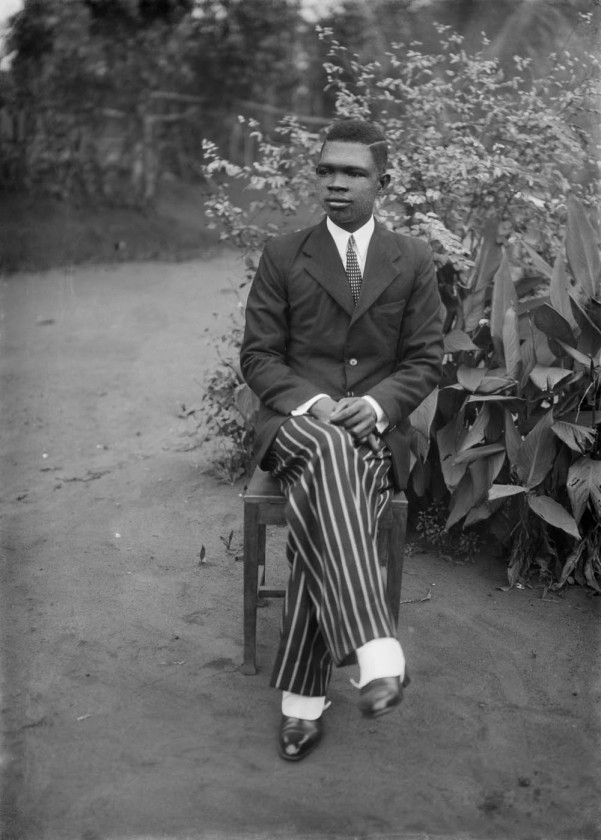
Benin City, Nigeria
c. 1942
Modern print from glass plate negative
76.2 x 55.9 cm (30 x 22 in.)
Chief S.O. Alonge Collection
EEPA 2009-007-0104
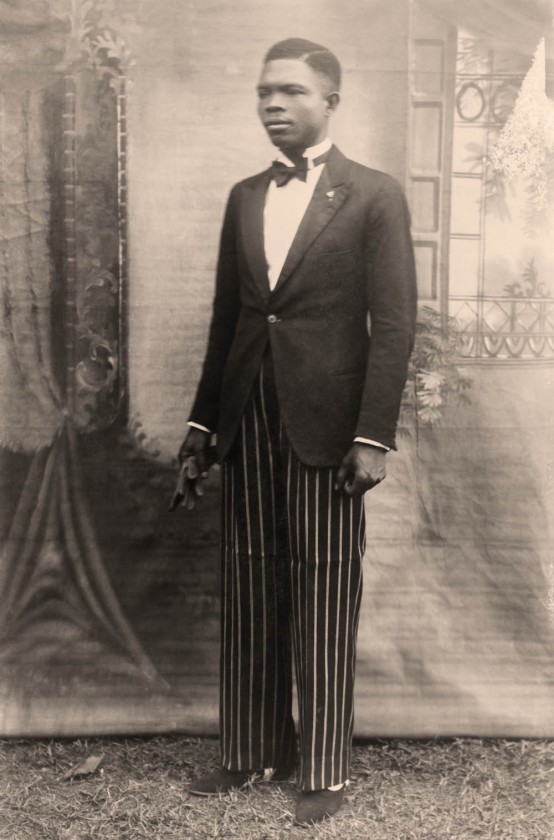
Benin City, Nigeria
c. 1942
Silver gelatin print with sepia tone
37.6 x 27.3 cm (14 13/16 x 10 3/4 in.)
Chief S.O. Alonge Collection
EEPA 2009-007-1799

c. 1950
Chief S.O. Alonge Collection
EEPA 2009-007-2048a
S.O. Alonge’s handwritten sheet music of various hymns relates to the keys on either end of the bandoneon. The right hand has 38 buttons and the left hand has 33 buttons, for a total of 71 buttons and 142 different positions. The sheet music relates to the various keys on the bandoneon (0/0; 1/1; 1/2; 2/2, etc.).
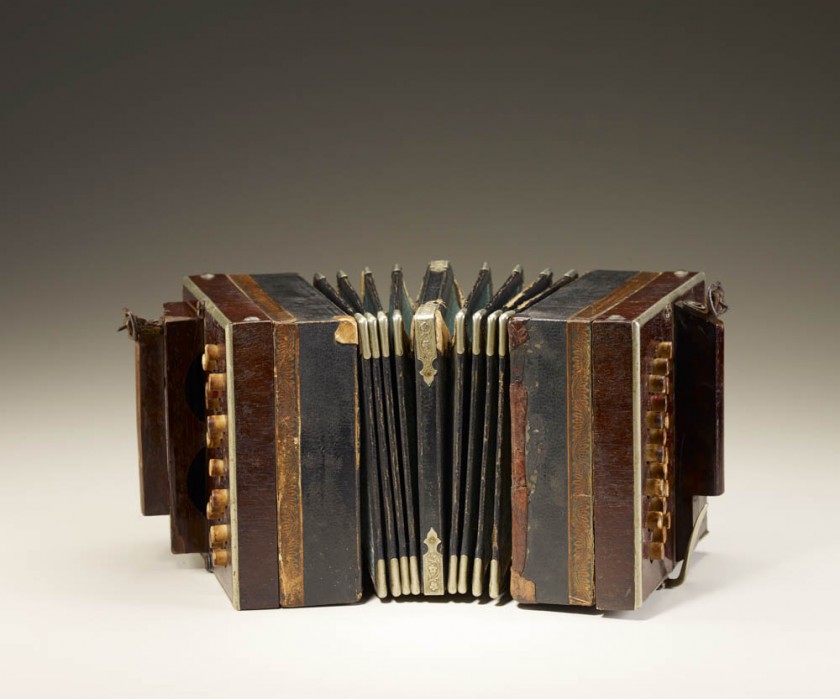
c. 1950
Wood, paper, metal (silver?), heavy card, leather, bone
18 x 26.5 x 17 cm (7 1/16 x 10 7/16 x 6 11/16 in.)
S011.14
While it resembles an accordion, the bandoneon is a type of concertina with an extended bellows and two keyboards on either end. Named by Heinrich Band, a German instrument dealer, the bandoneon was exported to Argentina in the late 19th century and was used in the popular dances milonga and tango.
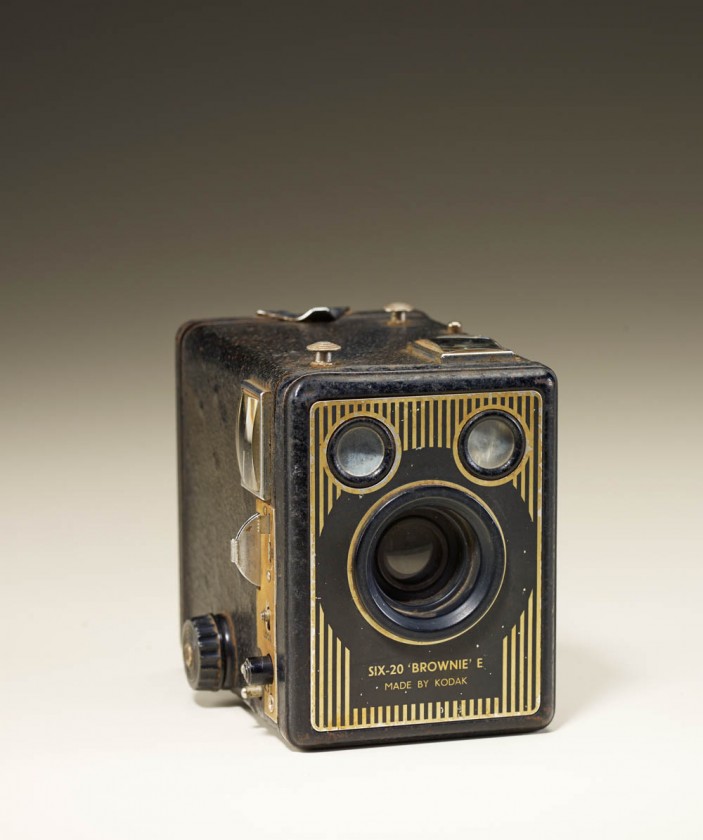
Metal, leather, glass
10 x 8.3 x 10.5 cm (3 15/16 x 3 1/4 x 4 1/8 in.)
S011.7
Alonge’s first camera was a Kodak Brownie box camera. It was simple to operate and affordable for the amateur photographer. Alonge later owned a more sophisticated Brownie (shown here)—the Kodak Six-20 camera (Model E)—built in the United Kingdom in 1947. Special features of the Six-20 included a close-up lens, filters, and the ability to take flash photography and brief time exposures.

